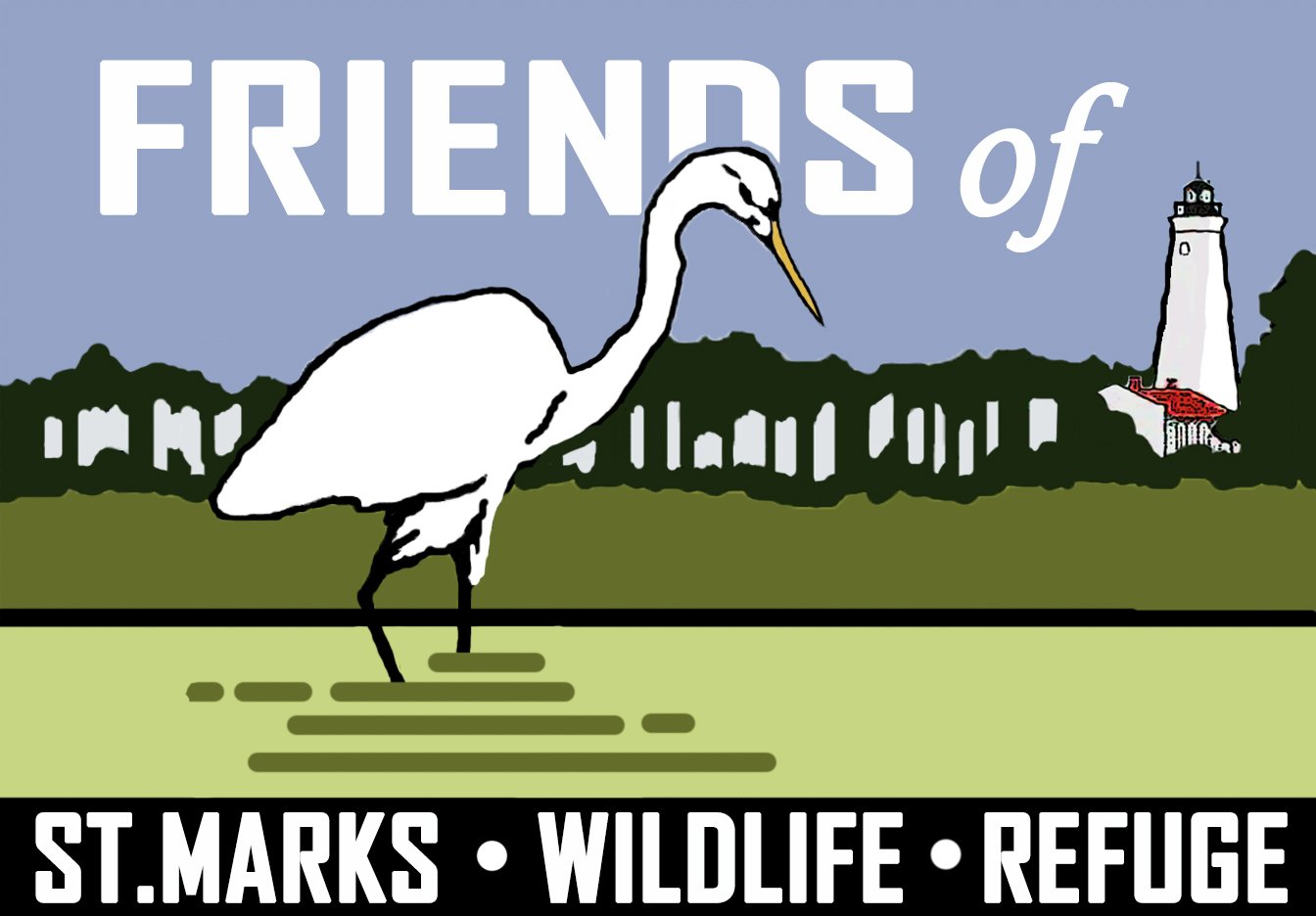Spring migration is in full swing at St. Marks NWR. April sees the peak of migration as birds fly out of, into and through the refuge. It’s likely that over seven million birds will migrate through the refuge between March 1st and June 15th with most flying over and not stopping.
April is also the peak of avian diversity at the refuge, when almost 200 species can be found at St. Marks. Already this month, 177 species have been recorded at the refuge.
Most of our winter residents have left, although we have a few stragglers like Northern Harrier, Swamp Sparrow and Sora. Acadian Flycatchers and other newly-returned Summer residents are singing on territory and Blue-gray Gnatcatchers are already working on their lichen covered nests.
Migrants heading towards St. Marks are coming from many places. Some start their journey in Central or South America, Cuba or Hispaniola. Others like White Pelicans are following the Gulf coast up from South Florida. Many are making the trans-Gulf jump from Mexico’s Yucatan peninsula. Songbirds leaving the Yucatan just after sunset may be in the air for twenty hours before landing the following afternoon.
And it’s not just songbirds that are migrating. It’s the entire bird community. Shorebirds, herons and ducks are joining thrushes, warblers, grosbeaks and tanagers. They are headed to cool mountain slopes in the Appalachians and the Alleghenies, to ponds and marshes in Maine, to suburban yards in Indiana, to the vast Boreal forests of Canada and to the High Arctic tundra.
I’ve been to St. Marks four days this week chasing migrants. I’ve logged 115 species, mostly birding the Double Bridges, along Lighthouse Road and the Tower Pond Trail. I have seen seventeen warbler species this month including Tennessee, Hooded, Kentucky, Black-throated Green, Prairie, Yellow and American Redstart. Both Scarlet and Summer Tanagers are around, as well as, Rose-breasted and Blue Grosbeak, Indigo Bunting and Yellow-billed Cuckoo. The first Bobolinks showed up and I had a flock of fifty Lesser Yellowlegs, more than I usually get in a season.
Success at birding is comprised of three elements; Time in the field, identification skill and luck. Spending time in the field allows you to develop your identification skills and if you spend enough time in the field, you’ll get lucky and see birds. This week I have spent seventeen hours at St. Marks and probably walked twelve miles on trails and roadsides looking and listening for birds. I managed to miss the Worm-eating Warbler that everyone I ran into saw, but I lucked out and had a Bronzed Cowbird along Lighthouse Road.
St. Marks remains open and free to the public. Remember to maintain social distance while birding. Some areas of the trail are narrow and this requires birders to be cooperative and respectful, but it’s worth the effort.
There’s a Worm-eating Warbler out there, somewhere.
Don Morrow, Tallahassee, FL

